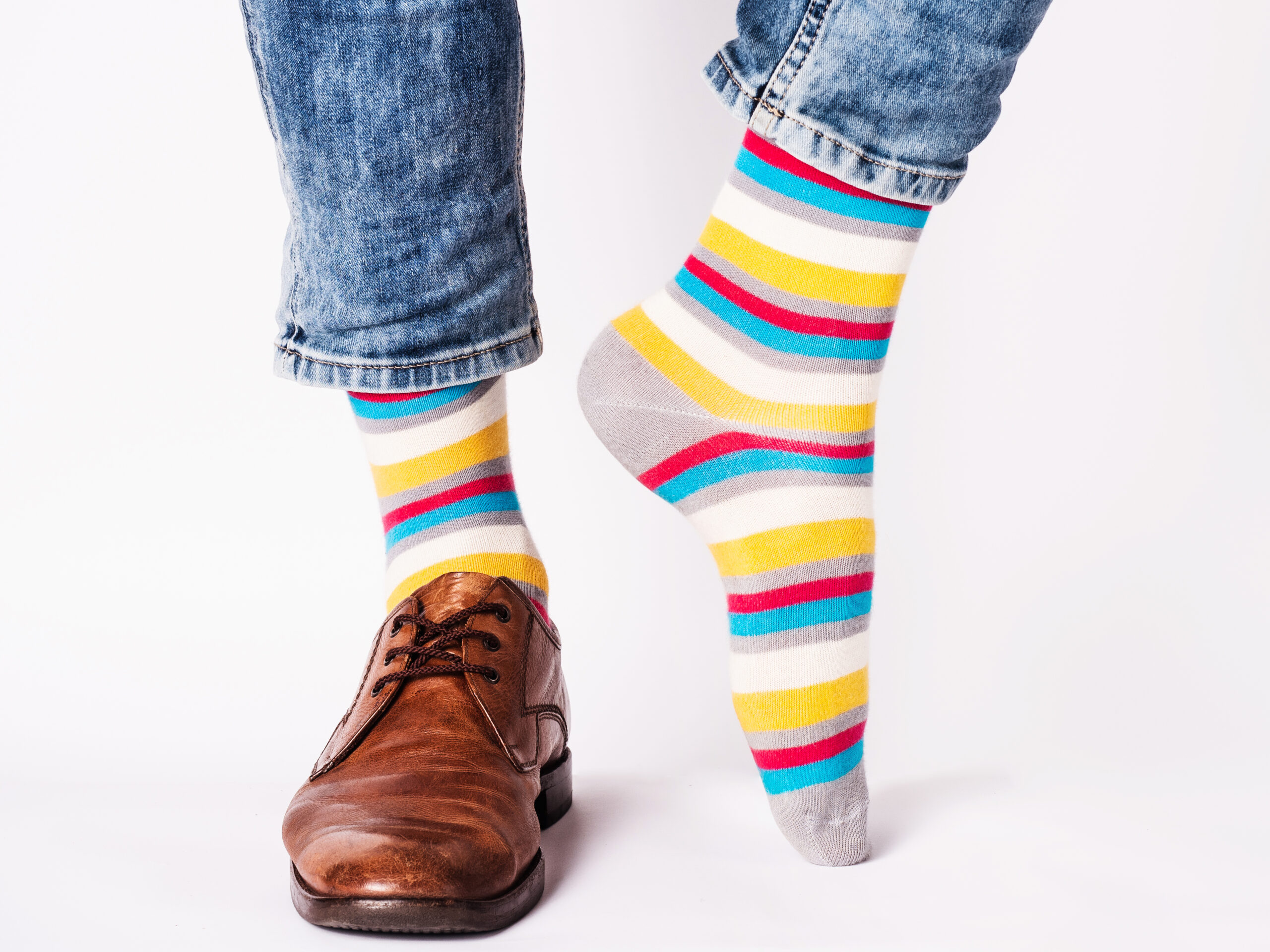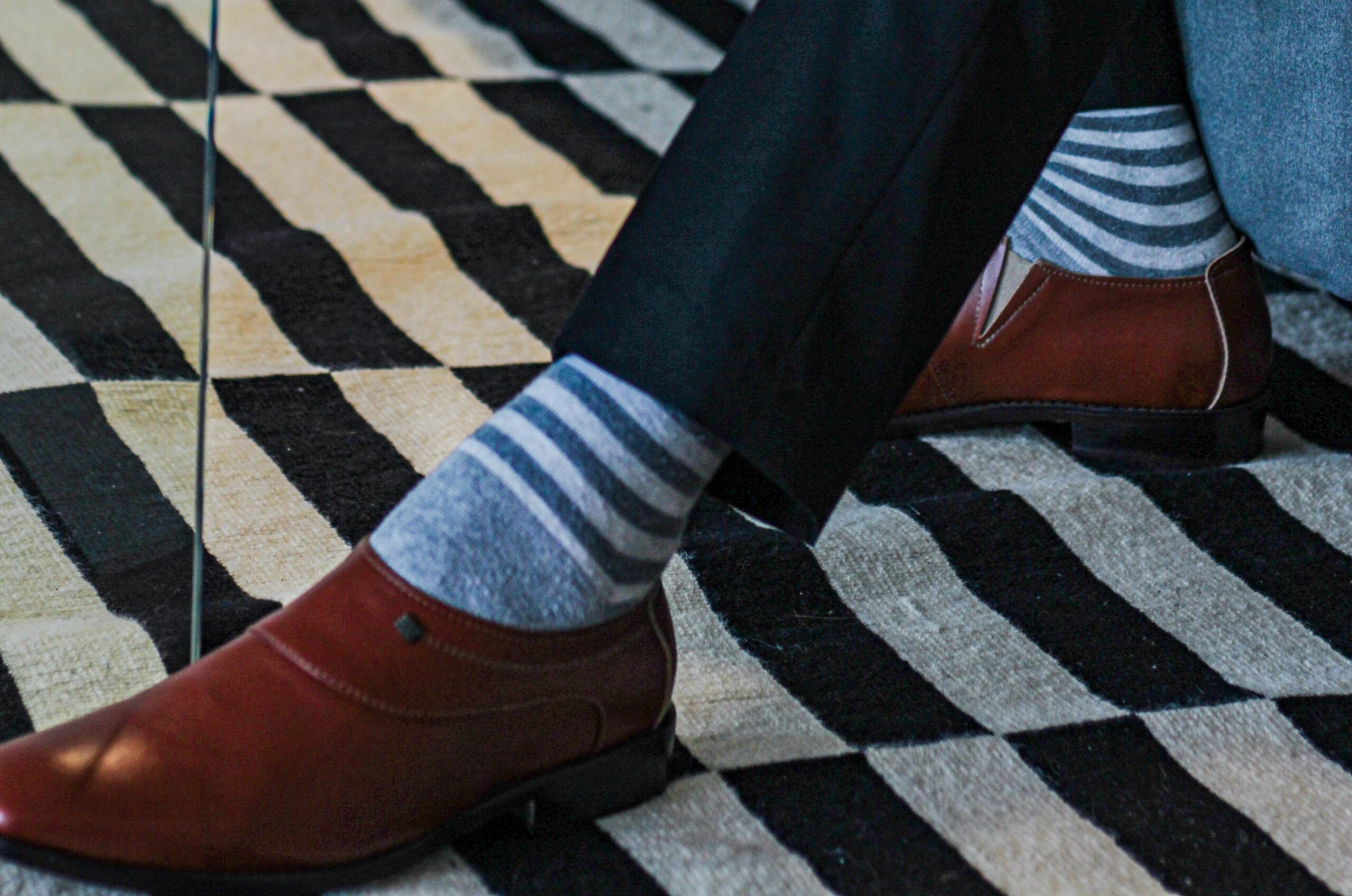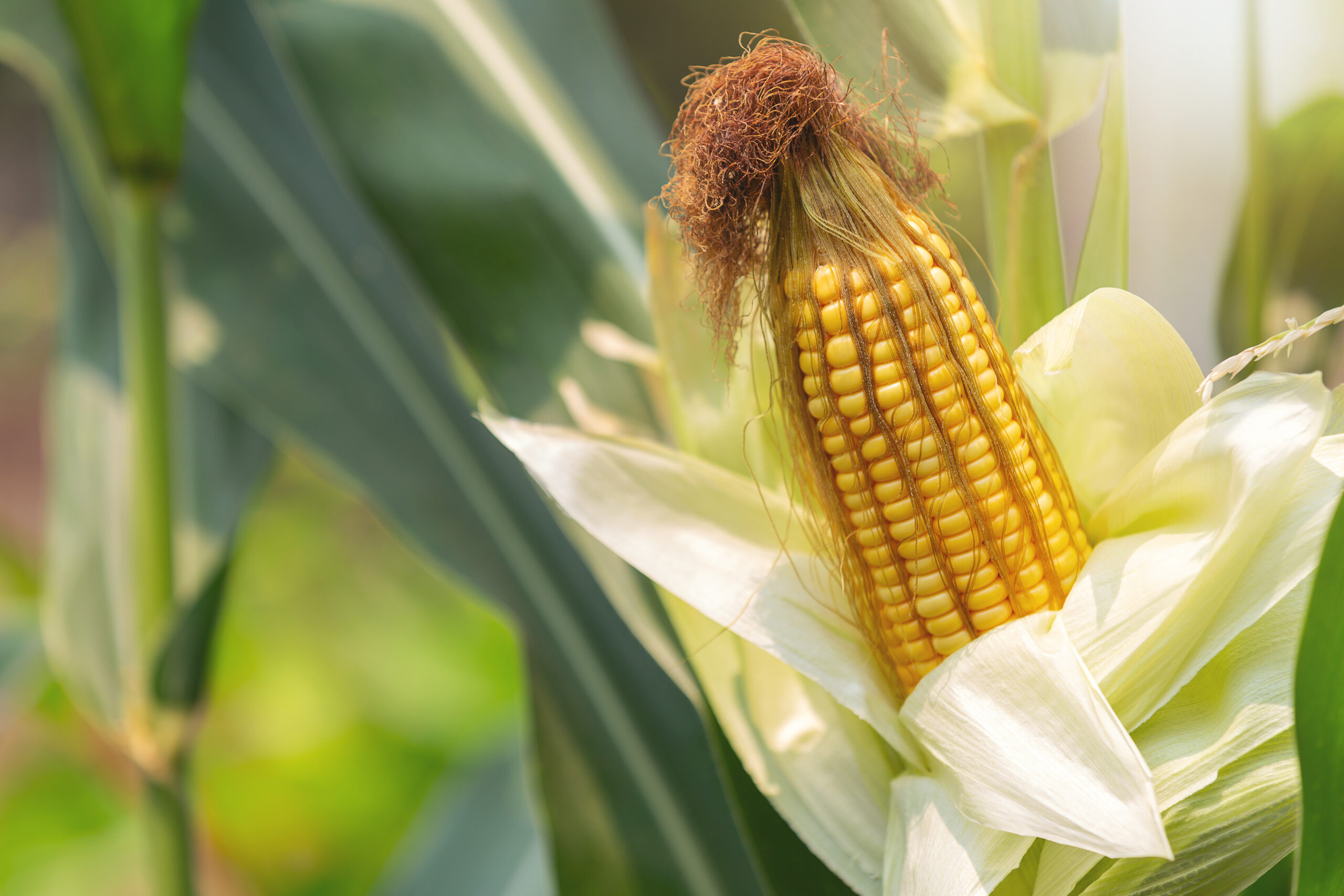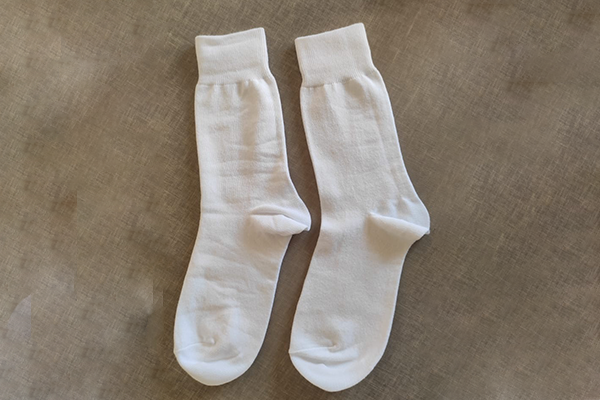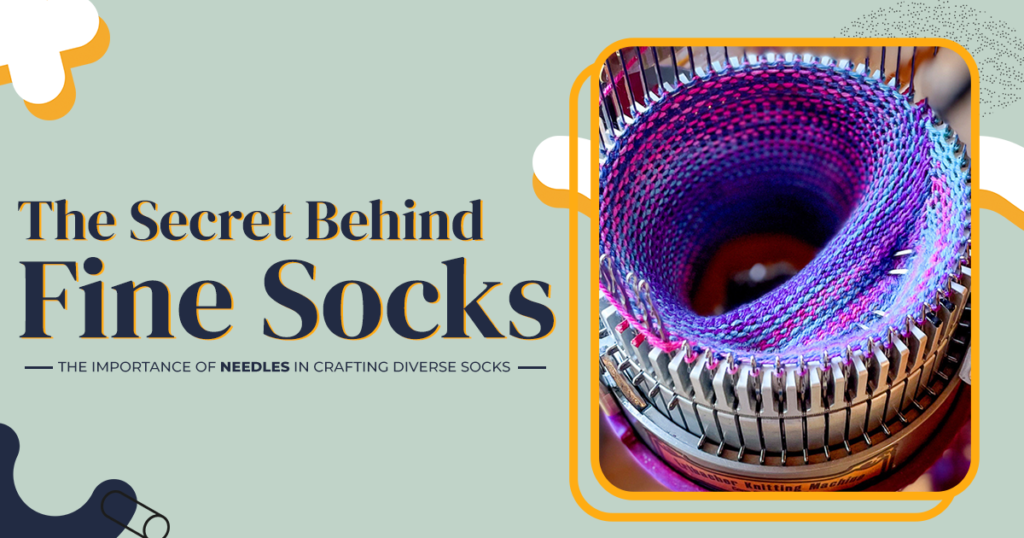
What Defines the Quality of a Sock?
The quality of a sock is determined by several factors: the material used, its durability, comfort, functionality, and even its environmental impact. However, when it comes to socks, most manufacturers and retailers focus solely on the material—rarely does anyone highlight the craftsmanship behind a truly well-made pair.
Think about this: you’re offering your customers soft, delicate organic cotton socks, yet complaints keep coming in about bulkiness. You’ve checked everything, but the issue remains unresolved.
The missing piece?
The needle.
At Texcyle, a leading custom socks manufacturer, we know that the secret to exceptional socks goes beyond premium materials and sustainability—it lies in the knitting process. The choice of needle directly influences a sock’s style, texture, durability, and overall performance.Here’s why needle selection makes all the difference and how it transforms the quality of every sock you produce:
Understanding Needle Count in Sock Machines
The needle count in a sock knitting machine refers to the number of needles arranged in a circular cylinder. These needles interweave yarns to create the sock fabric, and the total count determines the sock’s thickness, elasticity, and stitch precision. The general rule is: higher needle count = finer, denser fabric, whereas lower needle count = thicker, bulkier socks.
Thicker, bulkier socks aren’t necessarily a drawback—they serve a purpose. Different socks have different requirements; for instance, woolen socks benefit from a lower needle count to provide the necessary warmth and cushioning.

Types of Sock Machine Needles and Their Applications
Sock knitting machines come in various needle configurations, each catering to specific sock styles and materials. Below are some standard needle counts and their applications:
1. 48-72 Needle Count
Characteristics: Produces thick, cushioned socks with a robust texture. Best For: Outdoor sports socks, thermal socks, and heavyweight cotton socks designed for durability and insulation. Ideal Use: Kids’ socks, thick winter socks, and hiking socks.
2. 96-108 Needle Count
Characteristics: Medium-thickness socks offering a balance of comfort and warmth. Best For: Casual mid-calf socks and long cotton socks where moderate thickness is preferred. Ideal Use: Kids socks, casual cotton socks, and mid-weight athletic socks.
3. 120-144 Needle Count
Characteristics: Fine-gauge socks with a soft texture and well-defined patterns. Best For: Everyday sports socks, casual dress socks, and women’s fashion socks prioritising comfort and breathability. Ideal Use: Men’s and women’s everyday socks, breathable office socks, and sports socks.
4. 168-200 Needle Count
Characteristics: 168 is the most common needle count.It’s ideal for thin, lightweight socks with exceptional elasticity and breathability. Best For: High-performance sports socks, luxury men’s dress socks, and no-show or low-cut fashionable socks. Ideal Use: Compression socks, women’s dress socks, premium business socks, and lightweight performance socks.
5. 240+ Needle Count
Characteristics: Produces ultra-premium socks with the highest level of detail, comfort, and durability. Best For: High-end luxury dress socks, ultra-thin seamless socks, and specialised performance wear. Ideal Use: Luxury designer socks, ultra-lightweight performance socks, and seamless dress socks.
How Needle Count Affects Sock Design and Quality
1. Softness and Durability
Higher needle counts create denser, more durable socks with a smooth finish, while lower counts produce softer, stretchier, and more breathable fabrics. Even when using the same materials, the feel of the sock varies based on needle configuration. Socks with lower needle counts tend to feel thicker and more cushioned, making them ideal for sports and outdoor activities, while those with higher counts offer a sleek and refined texture suited for business or formal wear.
2. Pattern and Stitch Definition
A higher needle count allows for a tighter, more detailed stitch, making complex patterns, textures, and logos stand out with precision. Socks with intricate designs, fine stripes, or embroidered logos benefit from 168N-200N needles, ensuring that every detail is sharp and clear. Conversely, socks with simpler patterns or solid colors can be made with lower needle counts without losing visual appeal.
3. Fit, Elasticity, and Comfort
Socks with a higher needle count provide a snug, second-skin fit that molds well to the foot, reducing wrinkles and bunching. Performance socks, compression socks, and football socks often use a higher needle count to ensure a secure fit, maintain shape, and enhance elasticity. Lower needle count socks, on the other hand, are stretchier and looser, making them comfortable for casual wear and lounging.
4. Breathability and Temperature Regulation
The density of the knit influences airflow and temperature control. Higher needle count socks are thinner and allow better breathability, making them ideal for warm climates and activewear. Lower needle count socks, due to their looser knit, retain more warmth, which is beneficial for winter socks and thermal wear.
5. Manufacturing Cost and Efficiency
While finer-gauge socks require more time and precision to knit, they offer superior quality. Lower needle counts, on the other hand, allow faster production but might compromise the sleekness of the final product. Brands like Nike prefer 168N or 200N machines, striking a balance between performance and production efficiency. High-needle-count socks also require more delicate yarns, adding to the material cost but improving overall product lifespan and appearance.
The Machinery Behind Needle Counts
Sock manufacturing machines vary based on their needle configurations and functions. Circular knitting machines, the most commonly used in sock production, come with different cylinder sizes to accommodate varying needle counts. These machines are programmed to control stitch density, tension, and pattern complexity, ensuring consistency in the final product.
For instance:
● Single-Cylinder Machines
Single-cylinder sock machines use a single set of needles arranged in a circular pattern, making them ideal for producing basic sock designs such as casual, dress, and tube socks. These machines offer seamless construction and precise detailing while maintaining cost-effectiveness and high production efficiency. The quality of the final product depends largely on the precision of the needles used, making them a reliable choice for standard sock manufacturing.

● Double-Cylinder Machines
Double-cylinder sock machines feature two needle cylinders, allowing for simultaneous knitting of the body and heel, resulting in more complex sock structures. This setup enables the production of a wider range of sock styles, including ribbed socks, jacquard designs, horizontal stripes, two-tone patterns, and reinforced heel-and-toe socks. These machines are commonly used for athletic socks, compression socks, cushioned socks, and high-performance sports socks that require added durability, elasticity, and intricate detailing. While more technically advanced, double-cylinder machines are essential for crafting premium, structured sock designs.

By fine-tuning the cylinder and choosing the right needles, we craft custom socks that perfectly align with your brand’s needs and cater to diverse consumer preferences. At Texcyle, we believe every sock deserves the same attention to detail as every customer does—delicate yet durable, stylish yet strong. No compromises, no shortcuts—just premium quality that keeps your brand’s originality intact. Get in touch with us to order in bulk and experience the finest in custom sock manufacturing. Let’s talk socks!




